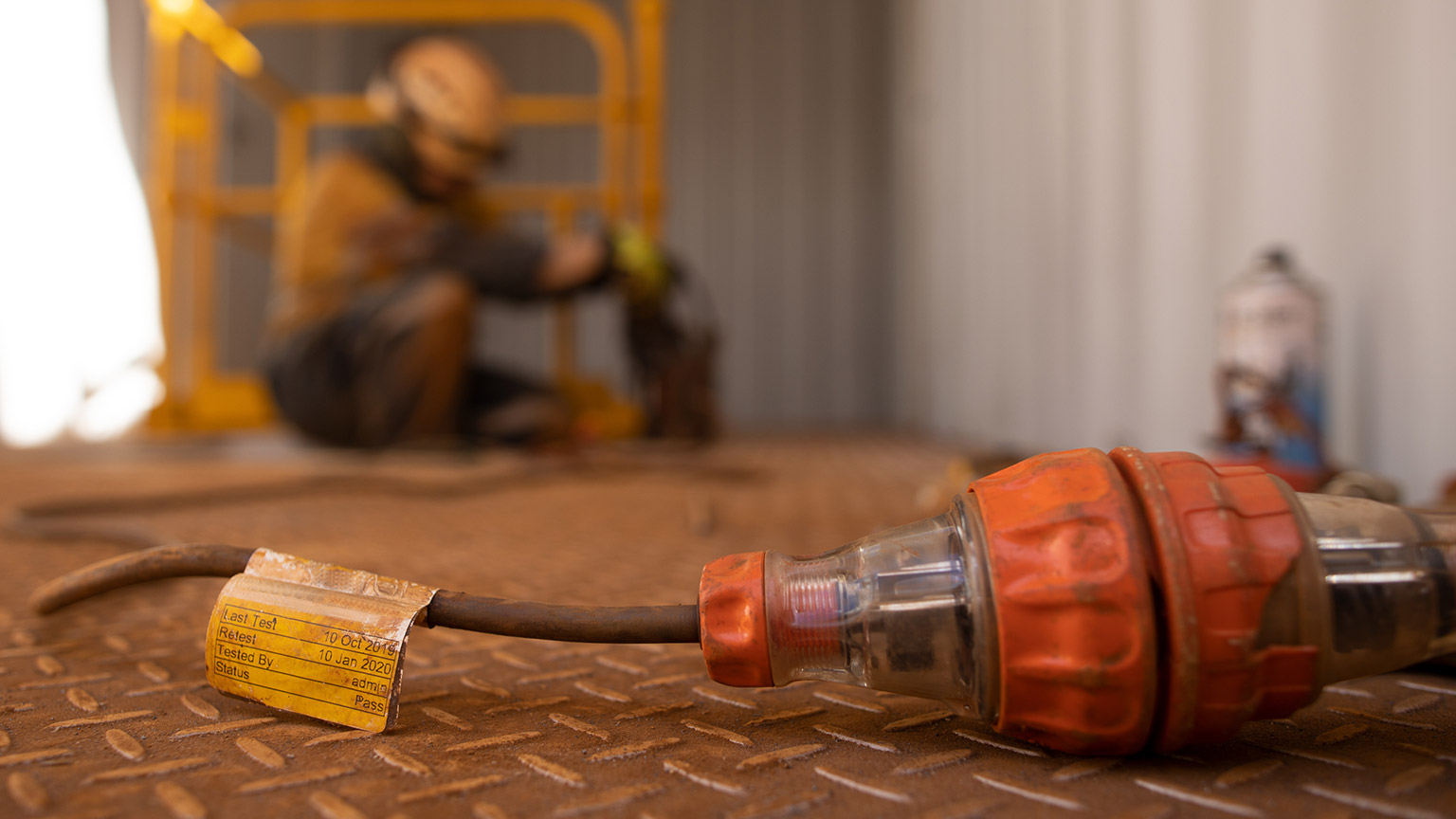| Day One | Day Two | Day Three | Day Four | |
|---|---|---|---|---|
| Course Content | Dangers of electricity: shock, electrocution, burns, falls. Exercises 10 to 12 | Electrical safety Exercises 13 to 14 | Electrical Hazards Exercises 15 to 17 | Accident prevention: training, grounding, distance Exercises 18 to 20 |
| Self-directed Learning | Metric conversions | Class forum questions | OSHA PowerPoint | Class forum questions |
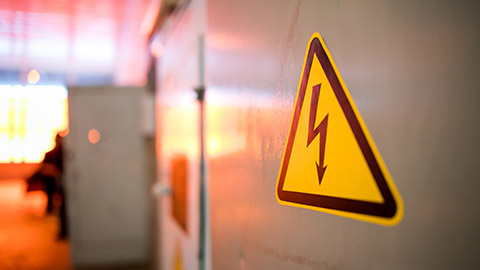
What we are covering:
- shock
- electrocution
- burns
- falls
Electricity is something that we cannot live without in our modern world, but it is also something that we need to treat with respect and always be aware of the danger when we are working around it. No device will completely protect you from being electrocuted, so always keep safety in mind.
Working with electricity can go horribly wrong. Read the article "Life is fragile tragic real-life examples of electrocutions". Be sure to click on the links to stories of two electrical apprentices working in ceiling spaces. Warning: in both stories the apprentices did unfortunately pass away as a result of their injuries.
You may also read the article on your phone by scanning the QR code.
Injuries from Electricity
There are four main types of injuries: electrocution (fatal), electric shock, burns, and falls. These injuries can happen in various ways:
1. Electrocution
Electrocution is death or severe injury caused by electric shock.
2. Electric shock
Electric shock is the effect of an electric current flowing through the human body either through direct contact with exposed energized conductors or circuit parts, or when electricity arcs (jumps) from an exposed energized conductor or circuit part (e.g., overhead power lines) through a gas (such as air) to a person who is grounded.
The severity of injury is based on:
- The amount of current.
- The duration of current.
- The path of current through the body. (Current travelling from arm to foot is likely to go through the heart, making it more dangerous than current travelling between a leg and the ground.)
Electrical current interferes with the electrical processes of the human body namely nerves, muscles and heart. Current flowing through the:
- Heart causes fibrillation of the heart - a breakdown of the pumping coordination of heart muscles that will not correct itself.
- Muscles causes contraction of the muscles – not only skeletal muscles preventing the shock victim from ‘letting go’, but the diaphragm muscle controlling the lungs and heart can also be "frozen" resulting in asphyxiation.
- Brain causes a loss of consciousness and seizures.
The following figures combine to illustrate the likely physiological effects of electric shock on the human body, for variations in the amount of electric current flowing through the body and time of exposure:
| Zone | Effects of electric shock on the human body | |
|---|---|---|
| 1 | Perception possible but usually no 'startled' reaction | |
| 2 | Perception and involuntary muscular contractions likely but no harmful side effects | |
| 3 |
|
|
| 4 |
Patho-physiological effects may occur:
Injuries may result in death |
Probability of ventricular fibrilation up to about 5% |
| 5 | Probability of ventricular fibrilation up to about 50% | |
| 6 | Probability of ventricular fibrilation above 50% | |
Exercise 10
Exercise 11
Exercise 12
Complete the table to explain the effect of current passing through the body of a person in average good health and condition.
- Refer to the two diagrams above to choose which zone the body current is in (numbers 1-6).
- Use the corresponding letter for each of the possible effects. You may use the same letter more than once.
3. Burns
Burns occur when current passing through your body is transformed into thermal energy as a result of the body’s resistance. Contact burns from being shocked can burn internal tissues while leaving only very small injuries on the outside of the skin.
Burns may also be the result of heat generated by an electric arc, and flame burns from materials that catch on fire from heating or ignition by electrical currents or an electric arc flash. Ultraviolet (UV) and infrared (IR) light emitted from the arc flash can also cause damage to the eyes.
An arc flash is a release of electrical energy that causes an explosion, reaching temperatures of up to 20,000 degrees C. It usually occurs in large switchboards but may occur in smaller switchboards and large electrical equipment.

An arc flash can result in blast injuries, lung injuries, ruptured eardrums, shrapnel wounds, burns and blindness.
Watch the video about an actual arc flash.

4. Falls
Falls due to an electric shock can also result in serious injuries. They tend to occur due to muscle contractions, or a startle reaction, causing a person to fall from a ladder, scaffold or aerial bucket.
Self-directed Learning
Metric Conversions
With the introduction of measurements, it might be useful to revise some metric conversions!
This video shows how to convert metric units including examples.

Alternatively, you might find this diagram useful for some of the conversions you will be meeting.
Use the diagram to help you make the following conversions.
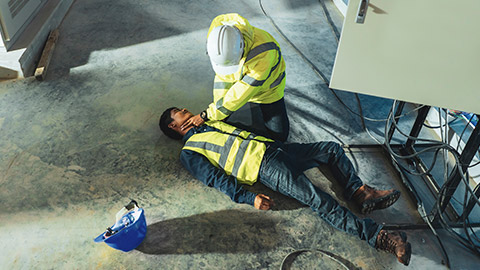
What we are covering:
- responding to electrical incident
- first aid checklists
You're working on site and come across your colleague lying on the ground. What do you do?
If a co-worker has come into contact with electricity, they may not be able to remove themselves from the electrical source.
Do not attempt to pull the person from the electrical source with your bare hands, you may be electrocuted!
Remember, your body is a good electrical conductor, so if you touch the person while they are connected to the electrical source, the electricity will flow through your body too. If you suspect that someone has come into contact with electricity, follow these steps:
- Call emergency services.
- Attempt to turn off/disconnect the source of the electricity. The longer a person is in contact with the power source, the more likely the shock will be fatal. The action you take will depend on whether the risk is posed by high voltage or low voltage electricity:
High Voltage – e.g. overhead power cables. High voltage electricity has the ability to 'jump' or 'arc' pass through soil, water, metal or even people or animals up to 8-10 meters away from a fallen power line. DO NOT APPROACH! Keep a safe distance from the victim until the power has been switched off by an official agency.
Low Voltage - turn off the source of electricity if you can safely do so. If this is not possible use an insulated object such as a broom with a dry wooden handle to push the victim clear of the source of shock. Stand on a dry insulating material (book or rubber matting etc) or wear rubber soled shoes for added protection. Never choose anything damp to help rescue the victim. - Once you have removed the victim from the electrical source, administer appropriate first aid. (If you have not had first aid training, the emergency operator will advise you until help arrives.) The ‘DRSABCD’ of resuscitation is the method used to assess collapsed patients.
Observe/check Action D Dangers Check for hazards & risks. Check scene safety for:
- yourself
- the casualty
- bystanders
If possible, eliminate, isolate or minimise hazards & risks. Only move the casualty if there is a clear reason to do so. R Response (alert voice pain unresponsive) Check for response Shout and tap S Send for help Send for help. Call an ambulance immediately if no response. Consider AED. A Airway Consider airway obstruction If no response, open airway (head tilt/chin lift) B Breathing If unresponsive and not breathing normally Start CPR If unresponsive and breathing normally Position the casualty on their side C Circulation/CPR If not breathing normally Start CPR If bleeding Use direct pressure to control bleeding If showing signs of shock Treat shock D Defibrillation Attach AED ASAP as needed (if casualty isn't breathing normally) General care When/if breathing normally, position the casualty on their side. Monitor and reassure the casualty - Burns - Exposure to electricity can cause burns to the skin, and in severe cases, the internal organs. For responsive casualties, cool burns for a minimum of 10 minutes under cold water and for unresponsive casualties cool the burn with wet dressings (or special burn dressings) after placing them in the recovery position.
- Muscle spasms/seizures may be present for some time after exposure to electricity and indicate a seriously ill casualty.
- Assist the casualty to the ground and remove any objects that may cause injury if struck.
- Place padding under the head - clothing if necessary.
- DO NOT place anything inside the casualty's mouth.
- Loosen any clothing that may restrict the airway.
- Try to time the seizure.
- In all cases of electric shock, even if the victim feels fine, seek medical treatment and advice immediately, as certain organs/systems within the body may be affected several hours after a shock.
Note – As part of this Level 3 qualification you will complete First Aid and CPR training. Your tutor will advise when this is scheduled for.
In the meantime, you might consider downloading this App to your phone.

Exercise 13
How well can you do in this safety quiz?
Exercise 14
- Find out what Static Electricity is and write a definition in your own words. What are some examples? (Add information to your glossary.)
- What is the difference between AC and DC current flow?
Self-directed Learning
Have you ever wondered why:
- Birds can safely rest on high voltage power lines without getting shocked?
- Removing a plug with wet hands dangerous?
- Putting a knife into a plugged-in toaster is dangerous?
Use the internet to find out the answers and write notes. Post your findings in the class discussion forum.
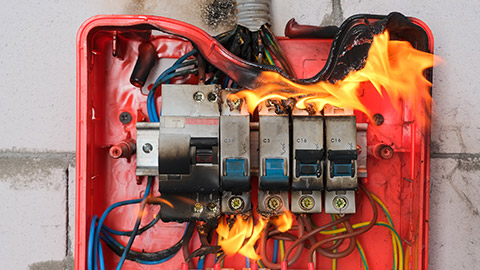
What we are covering:
- hazards and risks
- Unsafe equipment/installation
- Unsafe environments
- Unsafe work practices
A hazard is something that can cause harm, e.g. electricity, chemicals, working up a ladder, noise, stress, etc.
A risk is the chance, high or low, that any hazard will actually cause somebody harm.
Exercise 15
What are some of the hazards found in the electrical workplace? Photograph any hazards at the campus and upload your photos to the group forum. Comment on the risk level of each hazard.
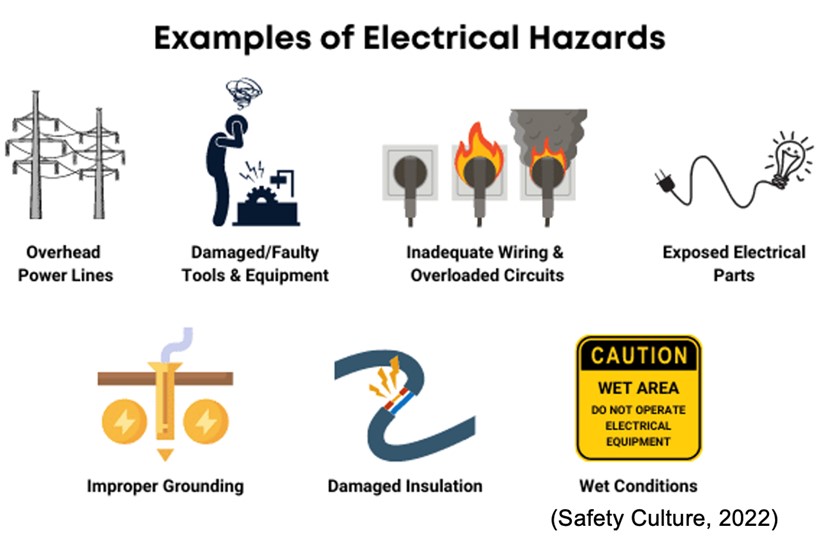
Electrical accidents are caused by:
1. Unsafe equipment and/or installation
Electrical equipment becomes a hazard when it is exposed, damaged, defective or used incorrectly.
- Ensure live parts of electrical equipment (operating at 50 V or more) are guarded against accidental contact by screens and covers.
- Check all live wires are properly insulated.
- Examine tools and equipment for cracks, damaged insulation, broken ground pins, frayed cord lines, or loose parts.
- Adequately ground power supply systems, circuits and equipment and use protective devices such as GFCIs, fuses and circuit breakers.
- Avoid overloading a circuit, resulting in heated wires and fire.
- Use wires of correct size for the operation and electrical load and extension cords designed for heavy-duty use.
2. Workplaces made unsafe by the environment
Your work environment has a number of hazards, such as power lines, underground services and excessive water. Over half the fatal electrical accidents each year are caused by contact with overhead lines.

- Keep floors and work surfaces dry so that electrical equipment doesn’t come into contact with water or other liquids.
- The electrical supply you are using may become overloaded when there are many contractors on site.
- There may also be risk from electrostatic and electromagnetic fields, chemicals, gases, dust and asbestos.
- Take extra care in a cramped space such as a tank or bin where there is a lot of earthed metalwork – it may be difficult to avoid an electric shock if a fault occurs.
- Keep yourself and equipment a minimum of 4 m away from overhead power lines. Allow 6 m for overhead transmission lines. (NZECP 34:2001)
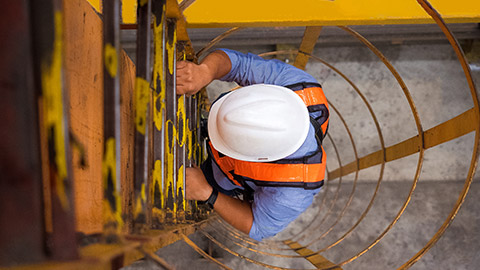
A 28-year-old scaffolder received a severe electric shock on a scaffolding worksite in West Auckland April 2022 when the steel pole he was holding touched low-hanging overhead power lines. Both arms were amputated as a result of his horrific injuries. Read about his story HERE and HERE.

3. Unsafe workers/work practices.
Workers themselves can be a hazard. You must:
- Be qualified and authorized to carry out electrical work.
- Follow all Health and Safety regulations and signs.
- Report unsafe conditions immediately.
- Follow good housekeeping practice - keep workplace clean and tidy, keep floor and exits clear of obstructions, store tools and equipment in the correct place, switch off and unplug appliances before cleaning and at the end of the day.
- Wear or use protective clothing and equipment provided.
Watch this clip where a young worker on a scissor lift is electrocuted by overhead wires. Warning: the content contains a reconstruction of what happened to the young worker.

Exercise 16
From the list below, select four examples of workplace hazards.
Exercise 17
Fill in the blanks with the corresponding letters of words that correctly complete the statements about workplace hazards.
Self-directed Learning
View the OSHA (Occupational Safety and Health Administration) Electrical Slide Presentation. You can access it on your phone via the QR code or download a COPY to your device. There are links for you to follow, and a quiz at the end!

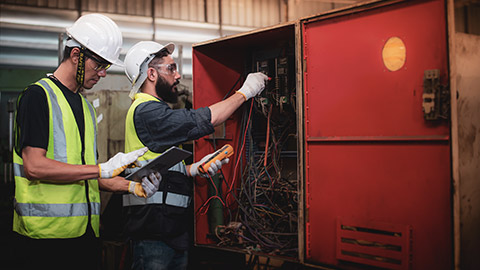
What we are covering:
- training and safety programmes
- grounding
- maintaining distance
The following diagram illustrates some of the most important lines of defense to coming in contact with energized conductors and equipment.
1. Training and Safety Programmes
To ensure employees are using safe work practices, they must be:
- Aware of the electrical hazards they will be exposed to.
- Trained in safety-related work practices as well as any other procedures necessary for safety from electrical hazards.
- Aware of and understand legislation relating to the electrical industry.
Exercise 18
Fua is a trainee electrical worker who wants to work safely and wants others to be safe too.
Choose the three most important behaviors for him to be practicing from the following list.
2. Grounding
Electrical grounding creates an alternative, low-resistance path for unwanted current to flow back to the ground if there is a fault in the tool or electrical system. When a short (or lightning) occurs, energy flows to the ground, protecting you from electrical shock, injury, and death.
Electrical equipment must be properly grounded. This includes your home wiring system, plug-in appliances, and devices. If you contact a defective electrical device that is not grounded, the electrical current will take the path of least resistance which will be YOU and you will be shocked.
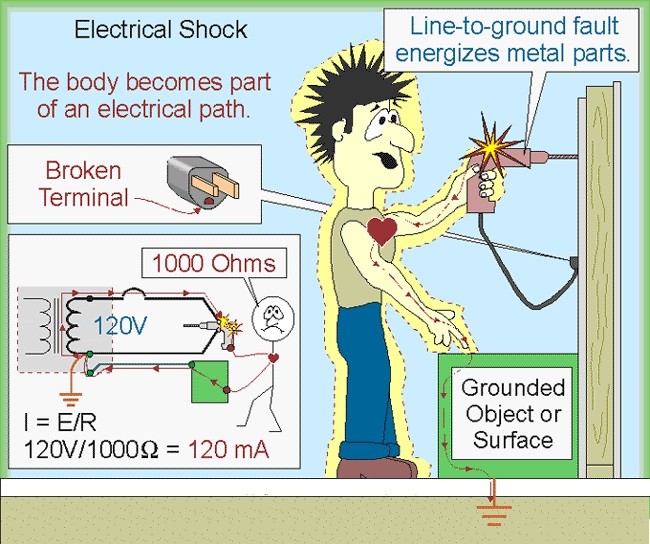
Power tools (and other appliances) are much safer when they have a third prong on the cord plug. The ground (earth) pin safely returns leakage current to ground. The added safety of 3-prong plugs is crucial for any appliance or cable intended for outdoor or wet area usage.
Although you only need two prongs – neutral and active, for a device to function, you should NEVER remove the ground pin and NEVER use an extension cord or electric tool that has a broken or missing ground pin!
Exercise 19
Research the answers to the following questions and report back to the group forum.
- In a 'three pin plug', why is the earth pin made longer and thicker than other pins?
- Why do some electronics have only two prongs?
3. Maintaining Distance
The best way to stay safe from electrical hazards is to ensure you stay away from them. If you must work in the same area as an electrical hazard or equipment operating on more than 50V, maintain a safe distance.
Physical barriers should always be used to protect employees from any electrical hazards. Always keep cabinet doors on electrical panels closed. Use shields, barriers, or insulating materials if an electrical hazard cannot be fully closed in.
When working near overhead lines, isolate the electricity supply where possible, otherwise maintain a minimum approach distance (MAD) to keep your body, tools and equipment a safe distance from the overhead line.
Exercise 20
Self-directed Learning
Research answers to the following questions. (Ensure your sources relate to New Zealand situations.) Post your answers to the forum page.
- What is the ‘safe distance’ to work near to:
- Overhead powerlines
- Overhead transmission lines
- What should you do if your vehicle (with you inside it) comes into contact with a fallen power line?
